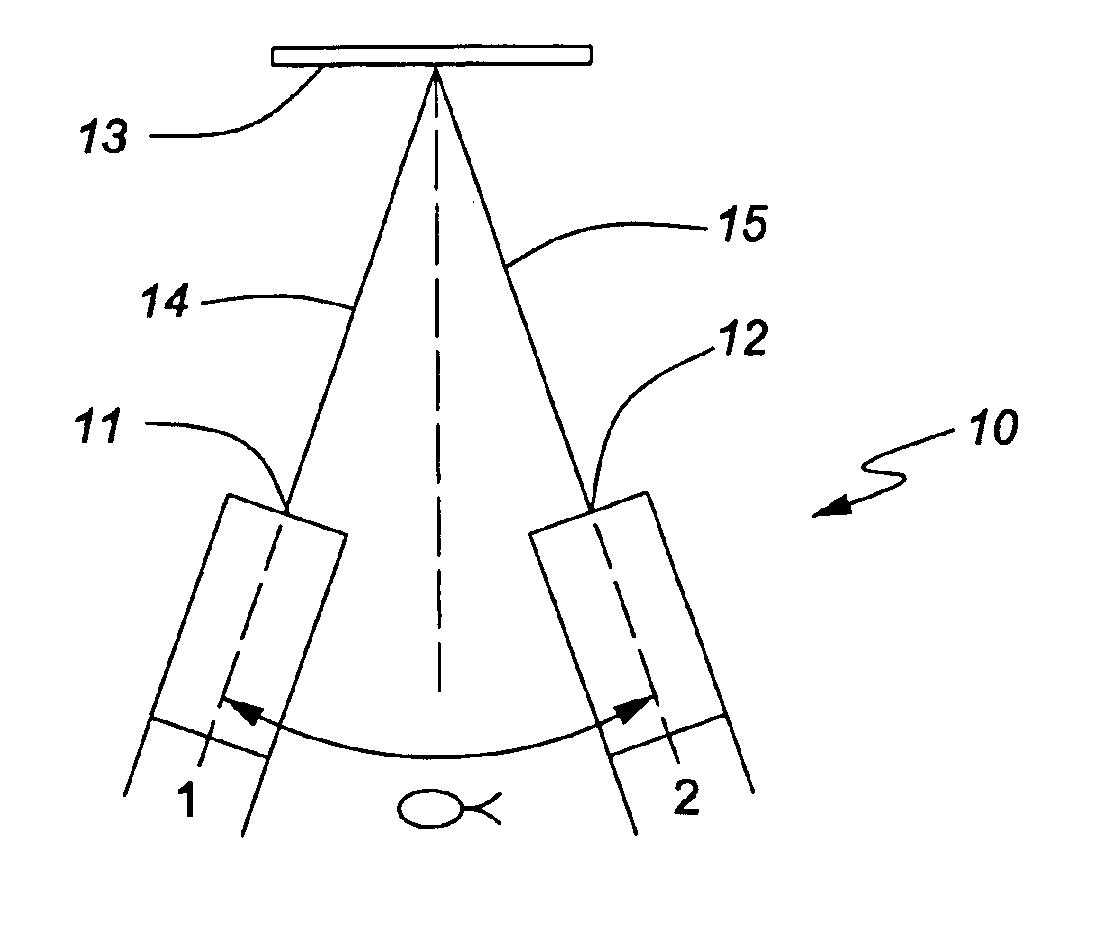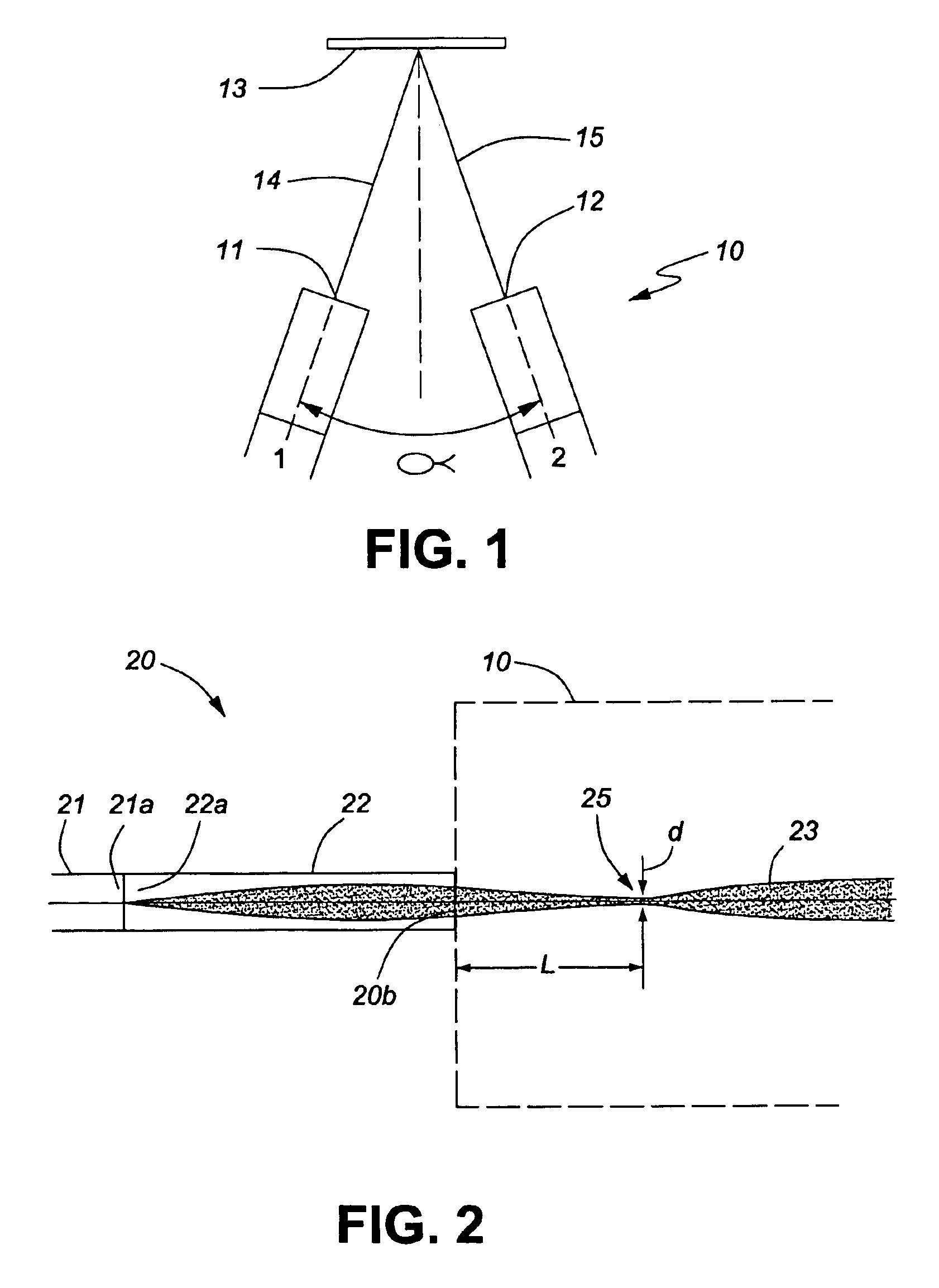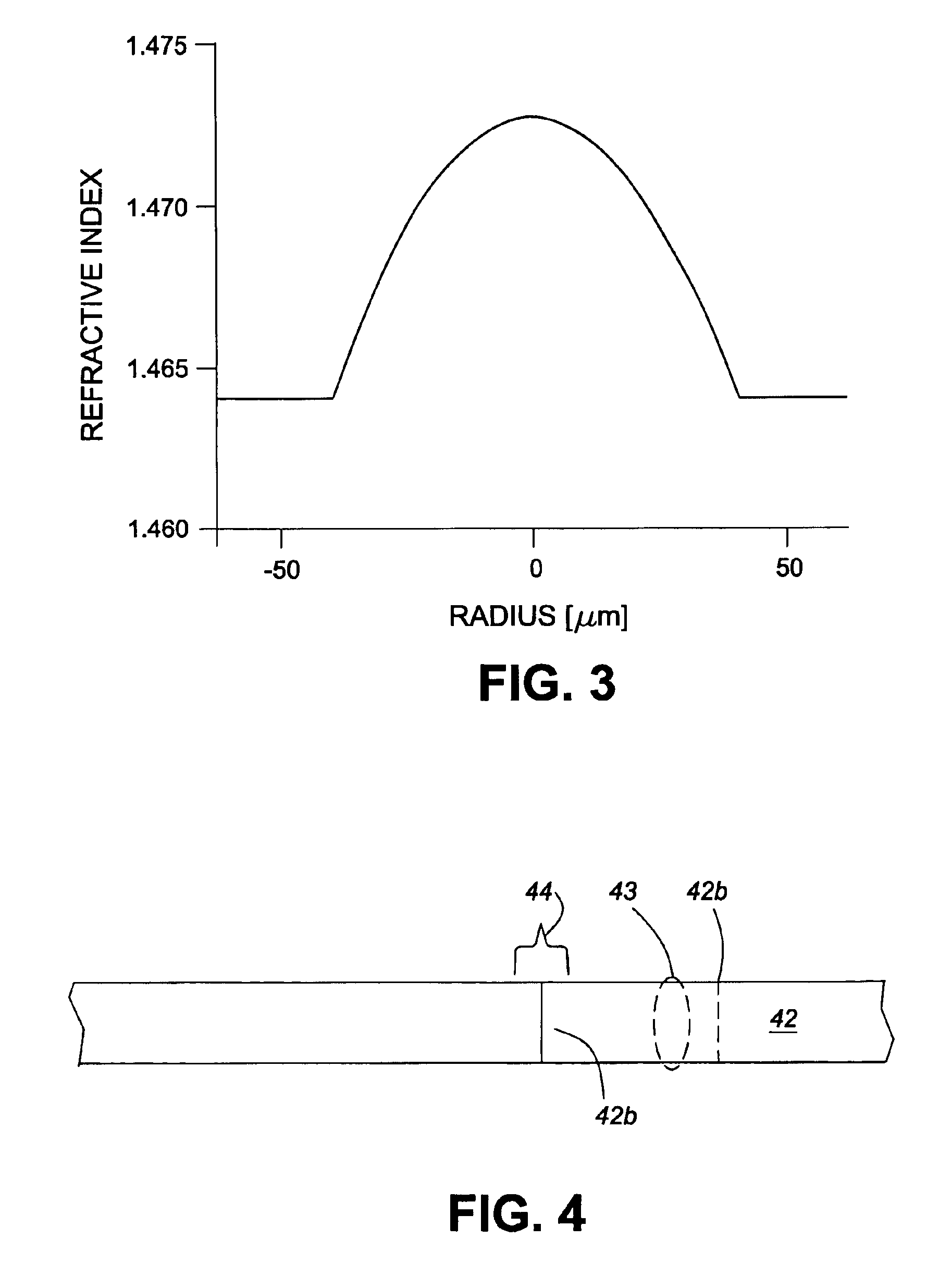Compact optical fiber coupler
a technology of optical fiber and coupler, applied in the field of compact optical fiber coupler, can solve the problems of increasing the sensitivity of signal loss to angular offset with beam diameter, macroscopic collimated lenses present limitations in miniaturizing devices or increasing interconnection density without increasing device or package size significantly, and fabricating lenses on the end of single modes. achieve the effect of high interconnection density
- Summary
- Abstract
- Description
- Claims
- Application Information
AI Technical Summary
Benefits of technology
Problems solved by technology
Method used
Image
Examples
Embodiment Construction
In order to achieve the long working distance, WD, between optical ports the gradient index fiber has a predetermined profile of refractive index, which is illustrated in FIG. 3.
FIG. 3 illustrates the preferred refractive index profile for the compact optical fiber coupler. The profile corresponds to equation 1:-
n(r)=n0[1−g2r2 / 2]
wherein g=2.7 / mm and n0=1.49 at a wavelength of 1.55 microns.
The gradient fiber is produced by conventional drawing of a doped fiber preform fabricated with the corresponding Ge / P-SiO2 glass composition profile. The total difference in index within the preform, which corresponds to the gradient in the fiber, is less than about 0.001. In the fiber core region, represented by the refractive index gradient, is preferably greater than about 70 to 80 microns. This gradient of refractive index and core diameter results in an optical coupler having a working distance of about 550 to 600 microns and a spot size of about 18 microns when the section of gradient index ...
PUM
 Login to View More
Login to View More Abstract
Description
Claims
Application Information
 Login to View More
Login to View More - R&D
- Intellectual Property
- Life Sciences
- Materials
- Tech Scout
- Unparalleled Data Quality
- Higher Quality Content
- 60% Fewer Hallucinations
Browse by: Latest US Patents, China's latest patents, Technical Efficacy Thesaurus, Application Domain, Technology Topic, Popular Technical Reports.
© 2025 PatSnap. All rights reserved.Legal|Privacy policy|Modern Slavery Act Transparency Statement|Sitemap|About US| Contact US: help@patsnap.com



